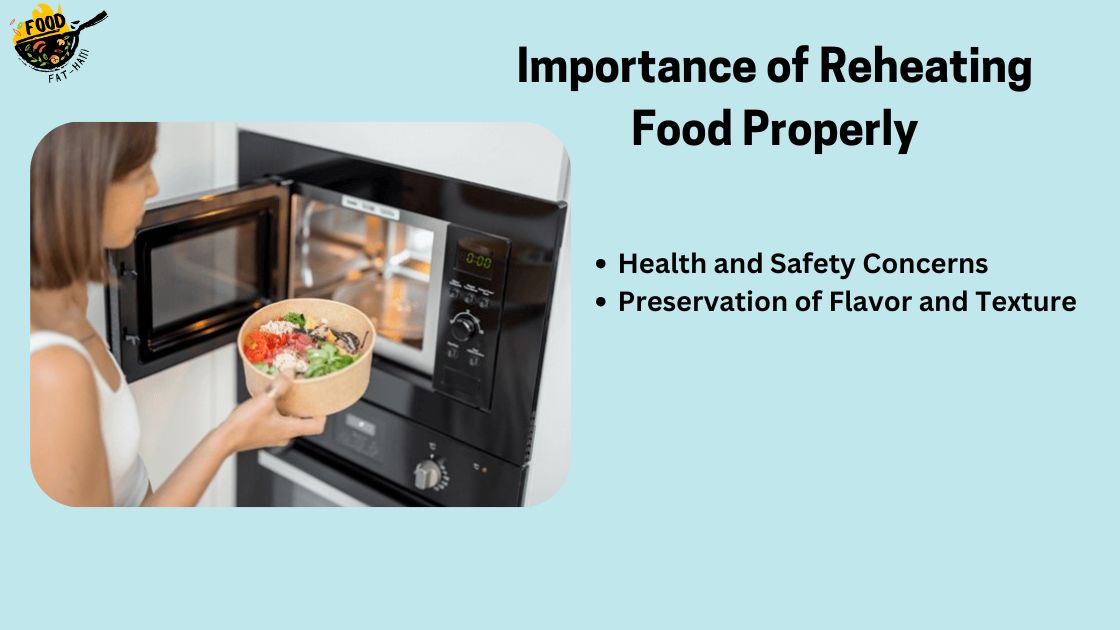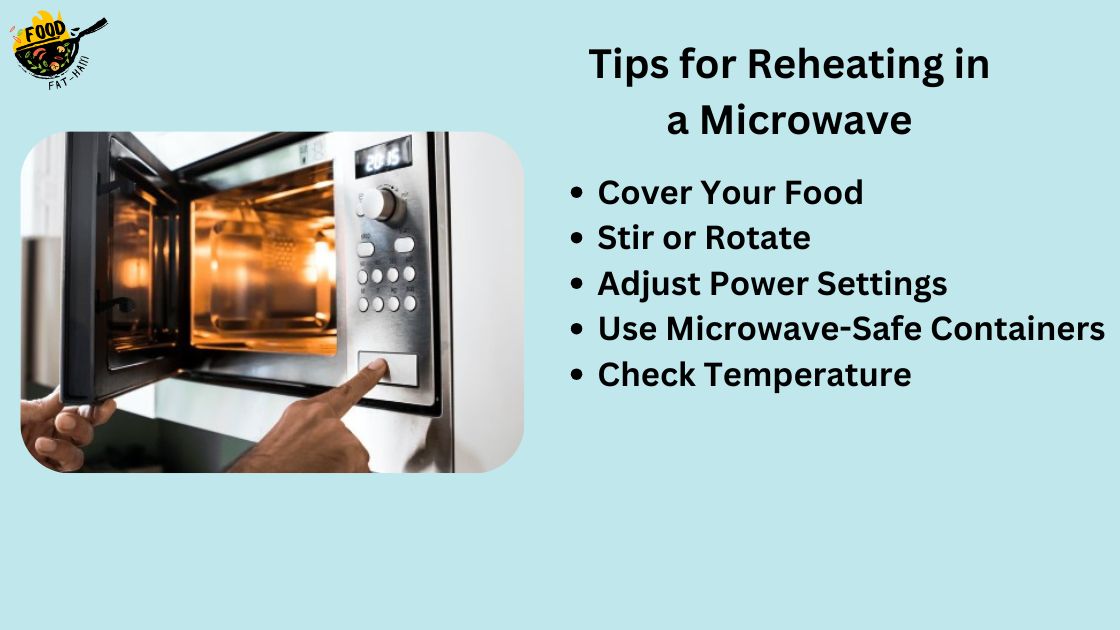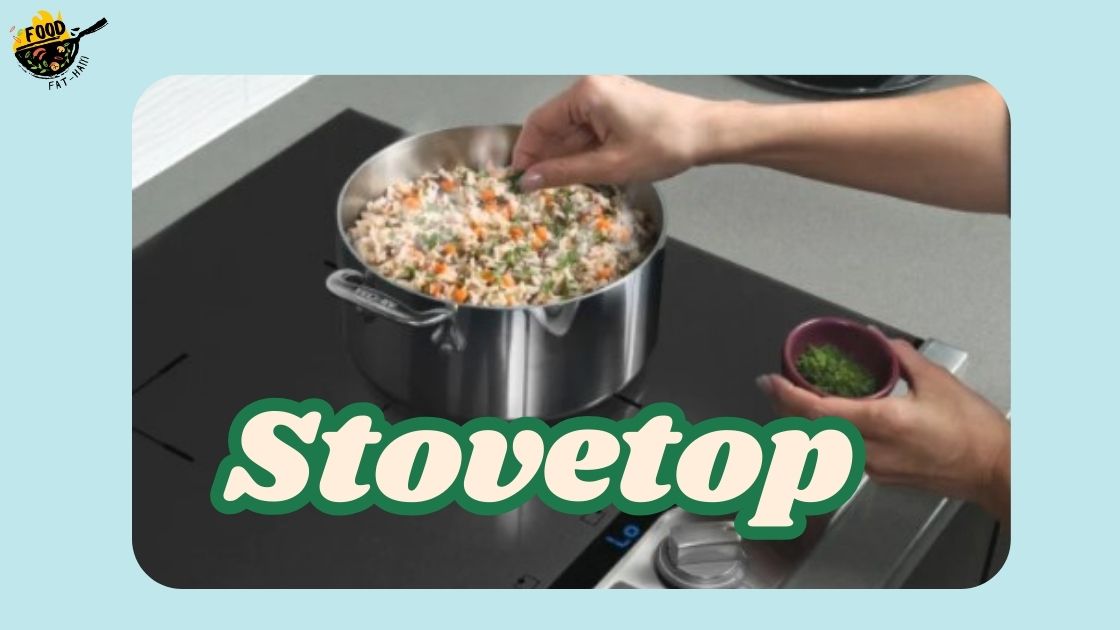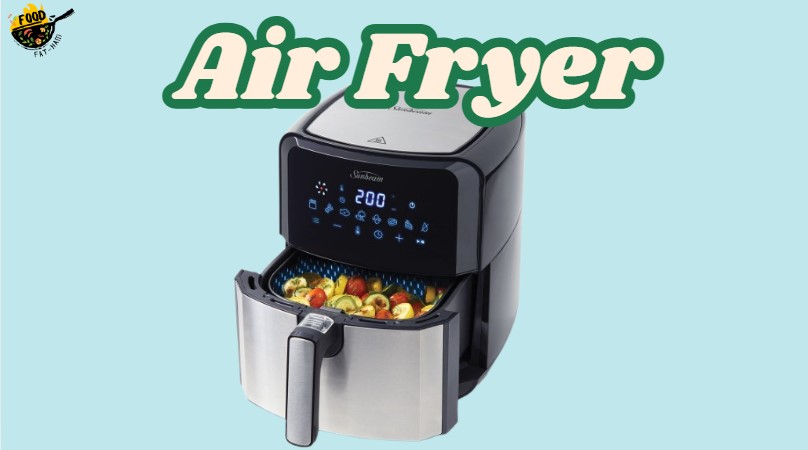The recommended equipment for reheating food is a microwave or an oven. Reheating food using these appliances is convenient and ensures even heating.
Table of Contents
ToggleAdditionally, it helps retain the flavors and texture of the food. Whether you need to warm up leftovers or heat pre-cooked meals, a microwave or oven is the ideal choice. These appliances are widely available and user-friendly, making them suitable for home kitchens and office spaces.
Reheating food properly prevents the risk of foodborne illnesses and maintains the quality of the dish. Knowing which equipment should you use to reheat food can save your time and effort when it comes to enjoying a hot and delicious meal.
Reheating food is an essential practice in many households, enabling families to enjoy last night’s dinner without the hassle of cooking from scratch. Whether it’s a hearty lasagna, a fragrant curry, or simply leftover pizza, knowing how to reheat food properly can make a significant difference in taste and texture. Every cook has probably faced the dilemma of how to best revive a meal that was once delectably fresh. Think back to those hectic weeknights when a warm slice of pizza suddenly becomes the highlight of your evening—a little nostalgia tied to the convenience of reheating. However, it’s important to remember that not all reheating methods are created equal. Each method offers unique advantages and works best for different types of food. Here’s a quick overview of what you can expect:
- Microwave: Fast and effective for single servings.
- Oven: Ideal for larger dishes, offering a crisp finish.
- Stovetop: Highly versatile, great for soups and stir-fries.
- Air Fryer: Provides a healthy, crispy outcome.
- Slow Cooker: Perfect for set-it-and-forget-it meals.
- Steamer: Gentle, preserving the delicate texture of foods.
In this article, we will explore these methods to ensure your leftovers are just as satisfying as the first time around.
Importance of Reheating Food Properly
Properly reheating food isn’t just about convenience; it plays a crucial role in ensuring safety, taste, and texture. No one wants to bite into a rubbery piece of chicken or a cold slab of lasagna, right? When food is reheated incorrectly, it can lead to both disappointing meals and potential health risks.

Health and Safety Concerns
One of the most pressing reasons for reheating food properly is to eliminate harmful bacteria. Storing and reheating food at the right temperatures ensures that you avoid foodborne illnesses. Here are some key points to keep in mind:
- Temperature: Food should be reheated to at least 165°F (74°C) to kill any bacteria present.
- Storage: Leftovers should be stored promptly and not left out at room temperature for extended periods.
Preservation of Flavor and Texture
Beyond safety, the method of reheating affects the flavor and texture of a meal. For example, using an oven to reheat pizza can help restore that crispy crust us pizza lovers crave. A few things to consider include:
- Moisture Retention: Some methods retain moisture better than others—microwaving may leave foods soggy while baking offers a crisp finish.
- Even Heating: Ensuring food is heated evenly can enhance taste, making leftovers feel more like a fresh meal.
In summary, understanding the importance of proper reheating methods not only enhances your culinary experience but also ensures the safety of you and your loved ones.
Microwave: A Quick and Convenient Option
When it comes to quick and convenient reheating, the microwave often takes center stage. Its speed is unbeatable—perfect for those chaotic weekday dinners when time is of the essence. No one wants to wait ages for their leftover pasta when they could be enjoying it in minutes!

Tips for Reheating in a Microwave
To make the most out of your microwave reheating experience, consider these handy tips:
- Cover Your Food: Use a microwave-safe lid or a damp paper towel to trap steam, which helps keep moisture in and prevents drying out.
- Stir or Rotate: For even heating, stir your food or rotate the container halfway through. This helps avoid cold spots.
- Adjust Power Settings: Instead of blasting food at full power, try reducing the wattage to prevent overcooking. Many microwaves have a “defrost” or “low” setting that works wonders.
- Use Microwave-Safe Containers: Always check that your container is safe for microwaving to avoid harmful chemicals mixing with your food.
- Check Temperature: Use a food thermometer to ensure your food reaches at least 165°F (74°C) for safe consumption.
By keeping these strategies in mind, you can ensure that your microwave reheating process is quick, effective, and yields delicious results.
Oven: Ideal for Reheating Larger Portions
While microwaves are convenient for quick meals, the oven shines when it comes to reheating larger portions. Whether you have a big casserole to reheat for family dinner or multiple slices of pizza, the oven provides the even heating and crispy texture that many dishes crave.
Baking vs Broiling: Which Is Better for Reheating Food?
When it comes to using the oven, you’ll often find yourself faced with the choice between baking and broiling. Both methods have their benefits, but which one should you choose for reheating? Baking:
- Even Heating: This method allows for gentle, even reheating—perfect for casseroles or baked dishes.
- Lid On: You can cover your food with foil to help retain moisture and heat it slowly.
Broiling:
- Quick Crisping: This method utilizes high heat from above, making it ideal for items like pizza or roasted vegetables where a crispy finish is desirable.
- Watch Closely: Since broiling can quickly char food, stay attentive to avoid any burnt edges.
Ultimately, if you’re looking for crispy goodness, broiling is your friend. However, for larger dishes that need thorough heating, baking remains the way to go. Each method has its place in the reheating game!
Stovetop: Versatile Method for Reheating
The stovetop is a versatile powerhouse when it comes to reheating food. It allows for precise temperature control and brings a wonderfully rich flavor to your meals that other methods may lack. If you’ve got a variety of dishes to heat up, the stovetop works wonders for many types, from soups to stir-fries.

Stir-frying for Quick Reheating
One of the most effective stovetop techniques is stir-frying. Not only is it quick, but it also ensures that your food is heated evenly while maintaining its original taste and texture. This method particularly shines with leftover vegetables, rice, or proteins. Imagine those cold stir-fried veggies from last night’s dinner—just a quick toss in a hot pan can bring them back to life! Here are a few tips for effective stir-frying to reheat your food:
- Use a Splash of Oil: Start with a tablespoon of oil to prevent sticking and promote even heating.
- High Heat: Turn up the heat to get your pan hot enough, ensuring a nice sear while preserving flavor.
- Add a Splash of Water or Broth: If your food seems too dry, adding a little liquid can create steam and help heat it through.
With these simple steps, your leftovers can turn into a delightful and satisfying meal in no time.
Air Fryer: A Healthier Alternative for Reheating
If you’re looking for a healthier way to reheat your food while still achieving that deliciously crispy texture, the air fryer is your best friend. This innovative kitchen appliance has gained popularity in recent years, and for good reason! It uses hot air circulation to heat food, allowing for even reheating without the need for excessive oil.

Benefits of Reheating in an Air Fryer
The benefits of using an air fryer for reheating are numerous. For example, after a long week, coming home to leftover fried chicken can feel like a treat, especially when reheating it in an air fryer. Here’s what you can look forward to when you choose this method:
- Crispy Texture: The air fryer mimics the frying process, revitalizing leftovers like French fries or breaded items without making them soggy.
- Reduced Calories: Since it requires little to no oil, reheated foods will often have fewer calories than if they were deep-fried.
- Quick Cooking: It heats up faster than traditional ovens, providing you with warm, delicious meals in just a few minutes.
- Energy Efficient: Using an air fryer consumes less energy compared to using a large oven.
With its ability to enhance flavor and texture while keeping things healthy, the air fryer is definitely a savvy choice for reheating your favorites!
Slow Cooker: Set It and Forget It Reheating
For those who prefer a more hands-off approach to reheating, the slow cooker is a fantastic option. This appliance is especially great for those busy days when you want to enjoy a warm, hearty meal without much effort. Simply set it up earlier in the day, and come home to perfectly heated leftovers.

Advantages of Using a Slow Cooker
Imagine returning home after a long day, to the rich aroma of your favorite stew, which was left gently warming throughout the day in your slow cooker. Here are some of the key benefits of using this method for reheating:
- Flavor Enhancement: Slow cooking allows the flavors to meld and develop over time, often making your meals taste even better than when they were freshly cooked.
- Convenience: Just toss in your leftovers, add a splash of broth or water to maintain moisture, and set the timer. There’s no need for constant monitoring.
- Versatility: Ideal for soups, stews, and casseroles, a slow cooker can reheat almost anything, provided it fits inside.
- Energy Efficient: It consumes less energy than an oven, making it a budget-friendly option.
While you may need to plan ahead a bit, the rewards of using a slow cooker for reheating are well worth the wait. Enjoy the simplicity of “set it and forget it” cooking, leaving you more time to focus on what really matters!
Steamers: Gentle Reheating for Delicate Foods
When it comes to reheating delicate foods, steamers are an often-overlooked gem in the kitchen. Unlike other methods that can dry out or toughen gentle items like fish or vegetables, steaming revitalizes them without losing their moisture. This makes steamers an ideal choice for reheating leftovers that you want to keep tender and flavorful.
Benefits of Using a Steamer
Consider how delightful it is to enjoy leftover salmon that feels just as succulent as on the day it was cooked! Here are some key advantages of using a steamer for reheating:
- Moisture Retention: Steaming ensures that delicate foods retain all their natural juices, preventing dryness that can occur with other reheating methods.
- Nutrient Preservation: This method is gentle and helps preserve the vitamins and minerals in your food, making it a healthier option.
- Versatility: Steamers aren’t just for vegetables! You can reheat dumplings, seafood, rice, and even some desserts without compromising quality.
- Ease of Cooking: Simply fill the bottom pot with water, place your food in the steaming basket, and let it do the work.
Using a steamer is a fantastic way to breathe new life into leftovers, ensuring that every meal feels fresh and enjoyable. So, next time you have delicate foods to reheat, reaching for the steamer could be your best bet!
Frequently Asked Questions For Which Equipment Should You Use To Reheat Food
What Equipment Should You Use To Reheat Food Quizlet?
To reheat food, use a microwave, oven, stovetop, or steamer for best results.
What Equipment Should You Use To Reheat Food Food Handler Training?
To reheat food in food handler training, use appropriate equipment.
What Is The Best Way To Reheat Food Food Handlers?
The best way to reheat food for food handlers is to use proper heating equipment and ensure the internal temperature reaches 165°F.
Should You Use Hot-Holding Equipment To Reheat Food?
Use hot-holding equipment to reheat food for safe and efficient heating.
Conclusion
Reheating food is a common task we all face in our daily lives. After careful consideration of various cooking equipment options, it is clear that each one has its advantages and disadvantages. Microwaves offer convenience and speed, making them a popular choice for reheating small portions quickly.
However, they may result in uneven heating and a loss of texture or crispness in certain dishes. On the other hand, ovens are a great option for reheating larger quantities of food or dishes that require an even heat distribution.
Their slower cooking time allows for a more thorough reheating process, preserving the taste and texture of the food. Lastly, stovetops provide precise control over the reheating process, making them ideal for delicate foods or dishes that require constant stirring.
Ultimately, the best equipment for reheating food depends on the specific needs of the dish and your personal preferences. Experimenting with different equipment can help you find the best method for preserving the delicious taste of your leftovers.



